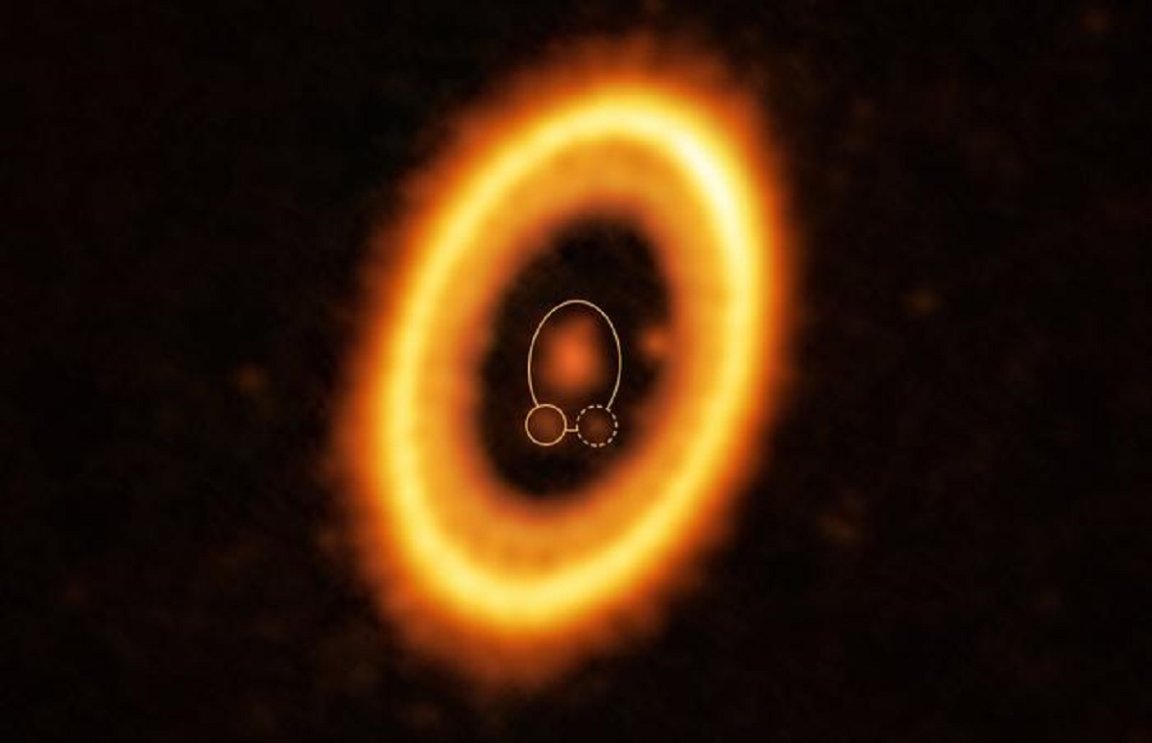
Weird Science
Scientists have theorized that it’s possible — but exceedingly rare — for two planets to share the same orbit while spinning around a star, in a truly weird phenomenon called “Trojan planets,” but there had been zero sign of this configuration happening in the vast cosmos.
Until now, that is. A recent discovery in a star system about 370 light-years away from Earth is showing strong evidence of a Trojan planet system, according to CNN. If confirmed, the discovery would be the first such system ever found by astronomers.
A team of astronomers who published their findings in the journal Astronomy and Astrophysics found this very likely Trojan planet system at PDS 70, a young star in the constellation of Centaurus. Data showed a massive gas exoplanet that’s three times the size of Jupiter, dubbed PDS 70b, orbiting the star along with “a cloud of debris” in the same orbital path.
Astronomers think this “dust mass” may either be the material of a planet coming into existence — or, in another brutal possibility, the remains of a planet that was torn apart.
“Exotrojans… have so far been like unicorns: they are allowed to exist by theory but no one has ever detected them,” said Jorge Lillo-Box, a researcher at the Centre for Astrobiology in Madrid and one of the study’s co-authors, in a statement.
Rare Discovery
Trojan bodies are rocky asteroids that exist on the same orbit as planets and are pretty common in our Solar System, such as the asteroids on the same orbit as Jupiter, but scientists have theorized that it’s possible for two planets to be traveling on the same orbit of their star as well.
“We can imagine that a planet can share its orbit with thousands of asteroids as in the case of Jupiter, but it is mind blowing to me that planets could share the same orbit,” said Olga Balsalobre-Ruza, the study’s first author and a postdoc at the Centre for Astrobiology, in the statement.
To find any possible Trojan planets, researchers analyzed data from Chile’s Atacama Large Millimeter/submillimeter Array of radio telescopes, also known as ALMA, to probe the PDS 70 system.
When researchers looked at one of its planets, PDS 70b, they found cloud debris in the same area where a Trojan planet would conceivably exist, CNN reports, and the dust cloud has twice the mass of our Moon.
To further cement their findings, the astronomers will have to wait until 2026 in order to see how far this possible Trojan planet system has orbited around its star.
If confirmed, the system will help astronomers gain a better understanding of Trojan exoplanets and their formation — and show, once again, that the universe always has new surprises.
More on exoplanets: Scientist Releases Amazing Video Of Exoplanets Orbiting Distant Star